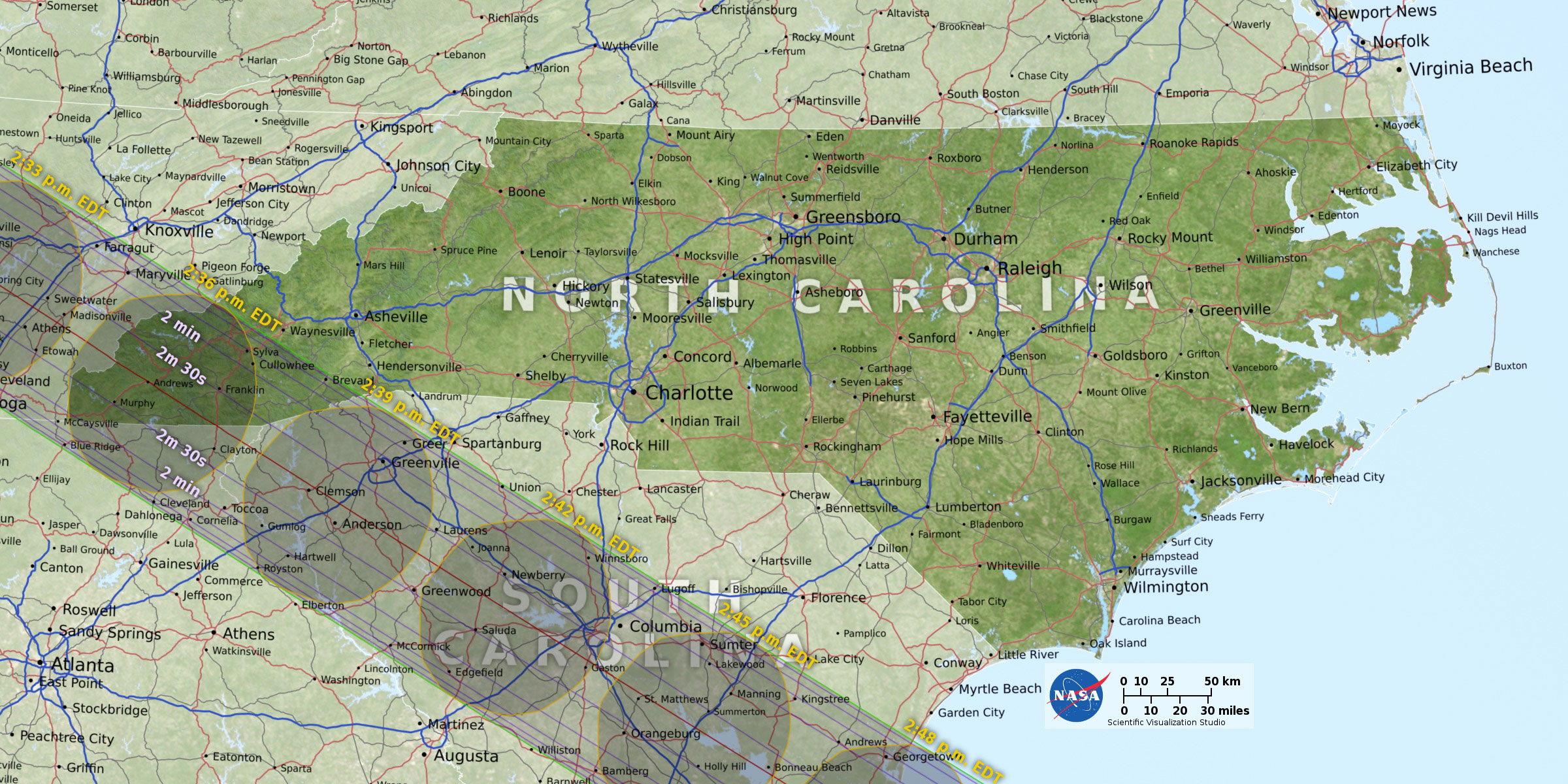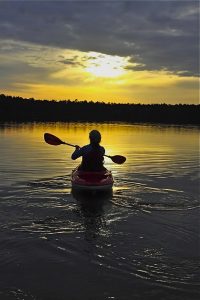Your opportunity to experience a rare total solar eclipse in western North Carolina arrives on Monday, August 21. To make sure you’re prepared and packed for totality, the experts at Diamond Brand Outdoors have assembled this helpful checklist. For more on what to expect, check out Everything You Need to Know About August’s Total Solar Eclipse.
Click here for a printer-friendly PDF version of this checklist.
What to Do Now for the Total Solar Eclipse
- Select the best location and route for viewing the eclipse based on accessibility, weather forecast, and the time of day the path of totality will pass through the area. Many prime viewing spots require tickets or have a capacity cap in place for the day, so do your homework.
- Select an alternate location and route. 64,000 tourists are expected to visit the mountains for the eclipse.
- Book lodging close to your primary viewing location. Hotel rooms, campsites, and cabins are going fast!
- Build your total solar eclipse viewing kit. (See the bottom of this post for a checklist.)
- Purchase your eclipse viewing glasses at Diamond Brand Outdoors. We’ve ordered a lot, but they’re going fast!
- Use an app, website, or book to find out which bright stars and planets you can expect to see during the totality, impressing your friends and kids!

What to Do the Week of the Total Solar Eclipse
- Test all of your equipment by doing a “dry run.” Nothing’s worse than having a faulty camera when the big event gets underway!
- Pack your total solar eclipse viewing kit and camping kit.
- Review the eclipse timing and weather forecasts for your primary and alternate viewing locations.
What to Do the Day of the Total Solar Eclipse
- Check the weather forecast.
- Leave early for your viewing location.
- Claim your spot by setting up chairs and viewing equipment, but remember to be a good neighbor so others may enjoy the experience.
- Test your equipment.
- Enjoy the day with your friends and family. The time of totality will be brief, but the experience leading up and following the first total solar eclipse in western North Carolina since 1506 will lead to storied memories for years to come.

Total Solar Eclipse Viewing Kit Checklist
- WNC + NATIONAL PARK MAPS: Cell towers will likely be overloaded, so don’t rely on an app.
- ECLIPSE VIEWING GLASSES: You must have these for direct solar viewing.
- HAT: To protect your head from the sun while you wait for the main event.
- SUNGLASSES: NOT to look at the sun, but to cut down on the glare when you’re looking everywhere else.
- PORTABLE PHONE CHARGER: Make sure you’ll be able to document the day through photos and videos.
- CAMPING CHAIRS + TABLES: Get yourself a chance to stake your claim to watch and rest after the excitement!
- BLANKETS: No matter where you’re watching, blankets keep things cleaner. Bring more than you think you need.
- COOLER: You’ll likely get to your viewing area hours before the eclipse. Drinks, lunch, and snacks are a must!
- DRINKWARE + WATER BOTTLES: Insulated cups and tumblers keep your drinks cold (or hot), don’t sweat, and are reusable.
- HEADLAMP OR FLASHLIGHT: Since you’ll be looking up, this is primarily for emergencies. Use the red setting instead of white.
- COMPASS: There’s plenty of information online that will tell you exactly where to look as totality begins.
- CAMERA: This is one of the times you may want a nicer camera than you’ll find on your phone.
- CELL PHONE: Coverage may be too spotty for weather and GPS, but your clock and camera will still work.
- WATER: Always stay hydrated, whether the sun is shining or not.
- SUNSCREEN: Always a good idea when you’ll be outside for any period of time.
- INSECT REPELLENT: Another good idea anytime you’re heading into the outdoors.
- OUTDOOR GAMES: Help pass the time and enjoy some relaxation with friends and family.
- HAMMOCK: If you’ve got space to set up an ENO hammock or WindPouch, laying down is a great way to watch.
- ELECTRICAL TAPE: Some folks don’t know how to turn off their camera’s flash. Be prepared to help them out.
- CAMPING KIT (OPTIONAL): Traveling the day before or staying overnight after the eclipse helps avoid traffic and can be fun!
- TENT
- SLEEPING BAG FOR EACH CAMPER
- LANTERN
- SLEEPING PAD FOR EACH CAMPER
- PILLOWS
- TARPS
- STOVE + FUEL
- MATCHES
- FRYING PAN + POT
- CUTTING BOARD + KNIFE
- SPONGE, SOAP, + BIN FOR WASHING DISHES
- PAPER TOWELS
- FIREWOOD (IF ALLOWED)
- ROASTING STICKS FOR S’MORES + HOT DOGS
- BEAR KEG
- ICE
- TRASH BAGS
- FIRST AID KIT
- CORKSCREW
































